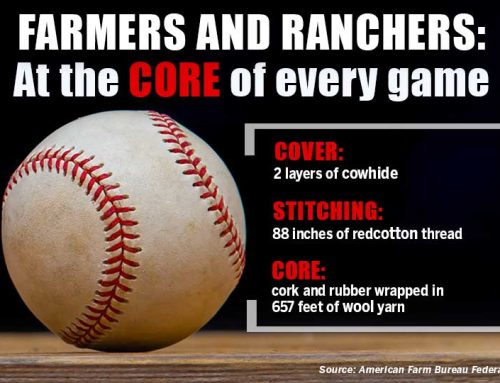By Jennifer Dorsett
It’s that time again. The fresh start of a new year. Like many of us, I snacked and dined my way through the holidays. And I may have put on a little extra padding in the process.
In order to reacquaint myself with my favorite jeans, I set goals and look to start the new year with a clean plate—err, slate. Focusing not only on exercise but nutrition as well.
That’s where things get complicated.
At the grocery store, the choices are overwhelming. And confusing.
How should I choose? And what does it all really mean?
While some food label terms are regulated by the U.S. Department of Agriculture (USDA) or the U.S. Food & Drug Administration (FDA), some of them aren’t.
USDA Organic
Organic is a labeling term that indicates the food or other agricultural product (clothes or textiles, usually) has been produced and processed using approved methods.
Organic standards prohibit the use of genetic engineering, most synthetic fertilizers and irradiation. Livestock must be managed without antibiotics, added growth hormones and mammalian or avian byproducts.
Sometimes higher production costs are a factor in the pricing of organic items. But sometimes, the extra cost is simply about marketing. Consumers are often willing to pay a premium for an organic product, because it’s supposed to be superior.
But there is no conclusive scientific evidence that organic food is more nutritious than conventionally-produced food. And there’s no evidence wearing clothing or using textiles made from conventional cotton is harmful to health.
If buying organic food or other products makes sense for your family, go for it! But know there’s no inherent nutritional advantage to organic products.
To paraphrase Romeo: Organic cookies, by any other name, would taste as sweet.
Non-GMO
Until recently, there were no federal standards for labeling genetically-modified organisms (GMOs) or “bioengineered” food ingredients. But by 2022, all foods that contain bioengineered ingredients must be labeled as such.
As for that little butterfly label found on so many “non-GMO” products? It’s a marketing symbol. The organization behind the label even states on its website that products bearing its trademarked seal cannot be claimed to be “GMO Free.”
There are currently 10 GMO food crops approved by USDA’s Animal and Plant Health Inspection Service and grown in the U.S.: alfalfa, apples, canola, corn, cotton, papaya, potatoes, soybeans, squash and sugar beets.
So that non-GMO bottled water isn’t worth the extra cost, unless you just like the bottle or label better.
Throw it in your basket if that’s the case. Just don’t buy it based on fear.
And there’s no such thing as GMO water.
The truth is, foods and food ingredients made with genetically-modified plants have always been regulated for safety by the FDA, just like any other food.
In addition to being safe, the FDA has found GMO foods to be as nutritious as foods from comparable traditionally-bred plants, and they are not likely to cause allergic reactions.
Gluten-Free
An estimated 3 million people in the U.S. have celiac disease. They may have serious health problems from consuming gluten, the mixture of naturally-occurring proteins in wheat, rye and barley.
FDA regulates the term “gluten-free” so people with gluten-related disorders have the assurance they’re buying foods truly free of gluten.
So those gluten-free crackers are safe for someone with celiac disease.
But it’s also possible to see gluten-free labeling on foods that wouldn’t contain gluten anyway, such as eggs or fresh produce.
Again, it all goes back to marketing. There is no such thing as an apple that contains gluten. If a carton of gluten-free strawberries costs more, skip it. Same for a ribeye steak or fresh chicken breasts.
Don’t pay extra because you fell for a marketing gimmick.
Grass-fed
USDA Food Safety and Inspection Service is responsible for the labeling of meat and poultry products. The agency recently issued new guidelines clarifying “grass-fed” food labels.
Meat and meat products using the term “grass-fed” or “100% grass-fed” must be made from animals that were fed nothing but forage after being weaned. If the animal eats grain, the label must clearly state so, such as “Made from cows fed 85 percent grass and 15 percent corn.”
There’s a myth going around that grass-fed beef is “better” for you. But science says otherwise.
Researchers from Texas A&M University conducted a study comparing the effects of ground beef from grass-fed and grain-fed cattle on risk factors for cardiovascular disease and Type II diabetes in men.
No negative effects were found for either product.
Another study by Texas Tech University found no difference in cholesterol content in grass-fed or grain-fed ground beef with similar fat contents.
There is a small difference in the ratio of omega-3 fatty acids between grass-fed and grain-fed beef, but it’s negligible—0.035 grams per 4-ounce serving. An adult woman would still have to eat 20 servings in one day—or five pounds of grass-fed beef—to obtain the National Institutes of Health’s Adequate Intake of omega-3 fatty acids.
So, buy beef based on personal preferences, not because of perceived health benefits.
Other claims
There are many other food labeling claims that go unregulated by federal agencies.
FDA doesn’t have a formal definition for “natural” on food labels, and there’s no federal rule to enforce the term.
My advice? Ignore the hype entirely.
Read the nutrition label. Compare prices and ingredients between two brands. Consider your own health goals.
If you’re aiming to eat less fat, then buying organic, non-GMO cookies over the regular ones isn’t going to help achieve that goal. The same goes for a diet lower in carbohydrates. Gluten-free pasta doesn’t equal low-carb pasta.
Every morsel of food in your basket represents the thousands of farmers and ranchers who grew it. They care about you and your family. They eat the same things. Buy the same brands. Shop at the same stores.
Embrace your goals for the new year and happy shopping from Texas Table Top!











Leave A Comment